SALT Beyoğlu is an impressive space, with six stories of beautiful facilities (I’m personally partial to the free and clean public restroom on the bottom floor and the Robinson Crusoe 389 bookstore and patio on the top floor). But a building is just a building, right? What truly makes this space delightful is the current exhibition featuring the works of Akram Zaatari, a photographer, filmmaker and co-founder of the Arab Image Foundation.
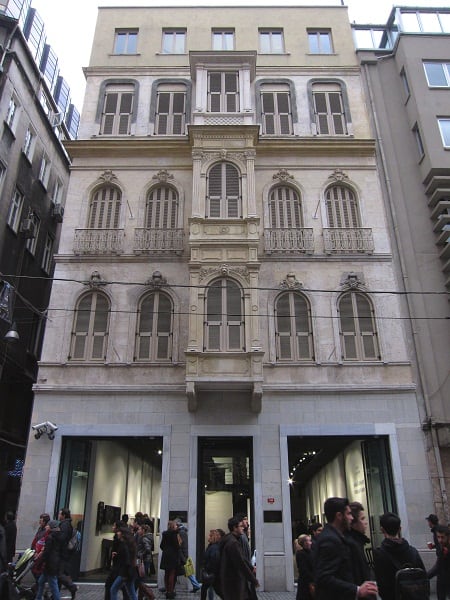
On my most recent visit, I worked my way through the three exhibition floors that are devoted exclusively to Zaatari’s work. Divided thematically, the third floor is titled “Poses and Postures,” the second floor “On Photography,” and finally the first floor, “Acts of Excavation and Their Reverse – Archaeology and Its Opposite.”
Pozlar ve Duruşlar (Poses and Postures)
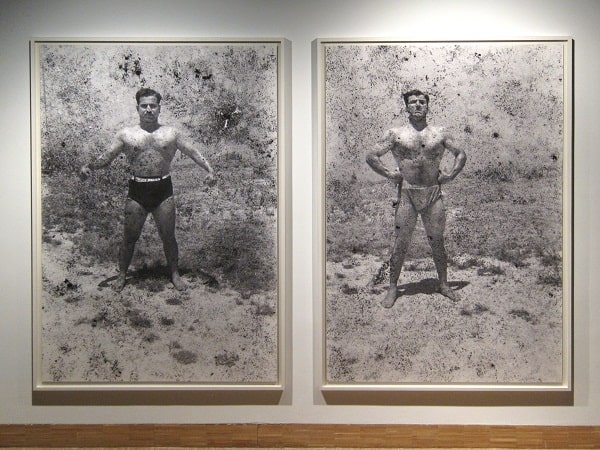
The entire thing is worth viewing, but the third floor, Poses and Postures, is packed with delights. Here, Zaatari explores poses and postures and, according to the wall text, “how they form a vocabulary of language and communication.” Welcomed by a pair of large scale prints of two young male bodybuilders, these images speak to youth, aging and the inevitable shift of our vision (both actual/physical and metaphorical) over time. Printed from negatives which were damaged in storage, their larger than life reproduction highlights their physical strength and points to their inevitable weakness, i.e. the very real damage done by aging. This floor also features “Another Resolution” (1988), his first foray into video installation, which today read as unsettling GIFs. For this work he asked adults to hold oddly eroticized poses, originally held by children in photographs, for ten minutes. The apparently contemporary nature of this work combined with its dated technology only add its charm and overall oddness.
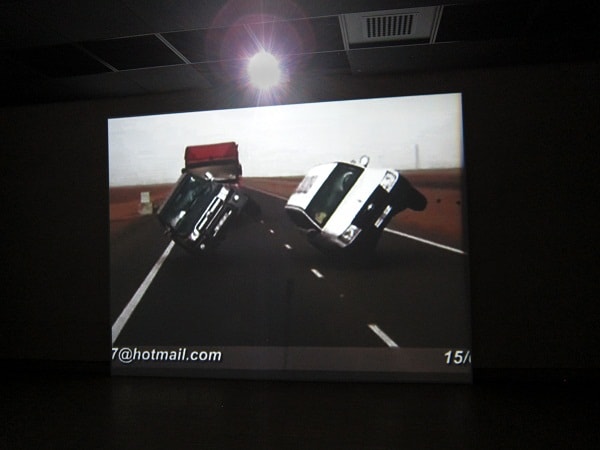
There are three video works on this floor, including my favorite piece in the show, “Dance to the End of Love”(2011). “Dance to the End of Love” is a four channel video installation drawing on the world’s largest public archive of images — the internet. Here, he explores the ways in which people choose to represent themselves through imagery in the modern age and how those images are disseminated. Taken from YouTube, the video is comprised of clips of Arab youths singing and dancing, body building and doing car and motorcycle acrobatics, all of which they have shot and uploaded themselves. Surrounding the viewer on four screens, one is plunged into intimate and isolated moments which become bragging rights in a public forum. A public viewing of a ‘private’ video, the videos are in turn thrilling, uncomfortable and often times, voyeuristic.
Third floor bonus — a beautiful video, shot in split screen, featuring interviews with artists and archivists. The video is shot to show the work which is being discussed on the left and the interviewee on the right. Technically, this is a wonderful solution to the trouble of showing and discussing work at the same time.
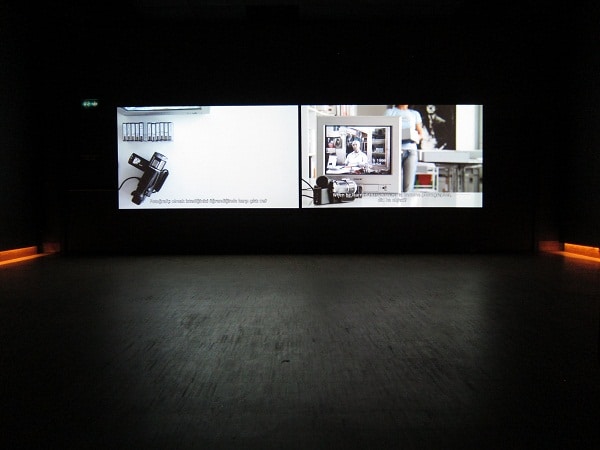
Fotograf Üzerine (On Photography)
Again, one is greeted with a pair of portraits from the archive, this time of two women. These negatives are described as “scratched” but a better word to describe the damage is “defaced.” The women in these pictures have been violently crossed out, slashed. This points to a complicated history. Though it is not known who damaged these negatives, it was most certainly done on purpose. Whether it was a man or a woman, in the context of this very masculine show, the violence reads as domestic. Whereas the large scale images of the male body builders were damaged by time and the elements, these images were damaged by an individual, making them among the most unsettling work in the show and also the least congruent.
This floor goes on to document a number of archives, which is to say, making an archive of an archive, a theoretical Droste effect, if you will. Another highlight on this floor is the final scene of his movie “28 Nights and a Poem” titled “Endnote”. Similar to “Another Resolution,” this GIF-like clip shows two men watching a computer screen while a party seemingly rages on in the next room. The viewer is left wondering what they could be watching, but understanding that whatever it is, it has enough interest to hold their attention over the nearby commotion. They intently watch on an endless loop as we intently watch them, again the Droste effect.
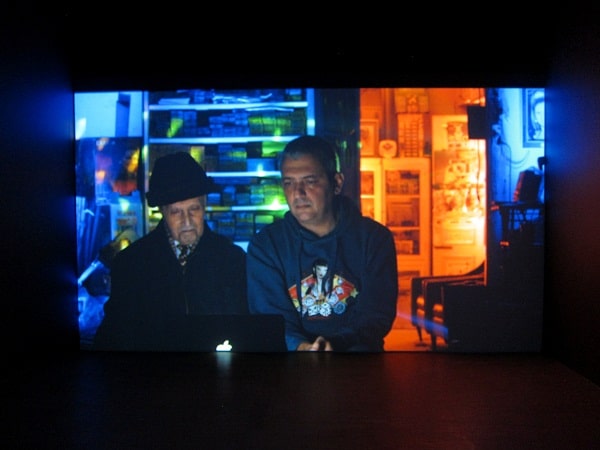
Kazı, Arkeoloji ve Tezatlari (Acts of Excavation and Their Reverse – Archaeology and Its Opposite)
This floor is very conceptually compelling, but seems to lack some of the visual interest of the previous floors. What on earth is the opposite of archaeology? Is it the idea of the intentional destruction of a historic record? The uncovering and intentional misrepresentation of historic artifacts? The imagined and uninvestigated idea of the future? Or, perhaps most interesting, it is the archive itself, the thing which Zaatari has spent his career mining and in turn creating. If an archive is a physical collection of historical records and documents, ostensibly created to preserve information (for posterity), there are two major problems. One, this often creates a sense of complacency where the information is considered “secure” and is promptly forgotten about (all anxiety of its disappearance having been soothed) and, two, it creates an overwhelming behemoth that becomes unsearchable and unviewable, thus hiding the information within the very thing that was conceived to maintain its availability. (For more on this latter point, do yourself a favor and read “The Body and the Archive” by Allan Sekula.)
This exhibit was both thorough and well presented. Zaatari has a vast and thoughtful body of work, of which this is but one small piece. But you better get going, you only have a few more weeks to check out the exhibit, which closes on February 14th!
You can learn more about the exhibit on SALT’s website. Keep up to date on all of SALT’s comings and goings by following them on Facebook and Twitter.
Entrance to all of the SALT galleries is free of charge. SALT Beyoğlu is open from 12:00-10:00 pm on Tuesday-Saturday, 12:00-6:00 pm on Sunday, and closed on Monday.








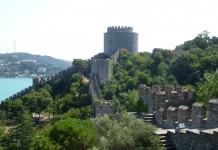


SALT Beyoğlu’nda Akram Zaatari sergisini görmek için son hafta… Hava karlı olsa da görmemişseniz gelin, görün, kaçırmayın.